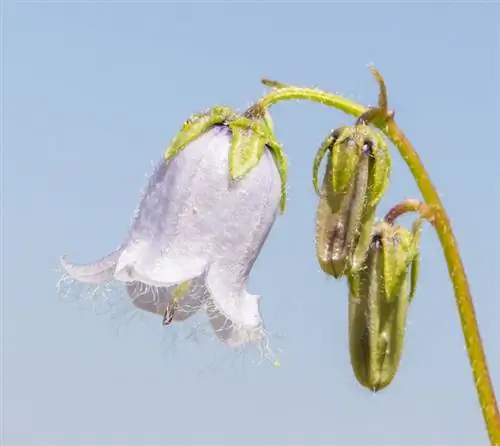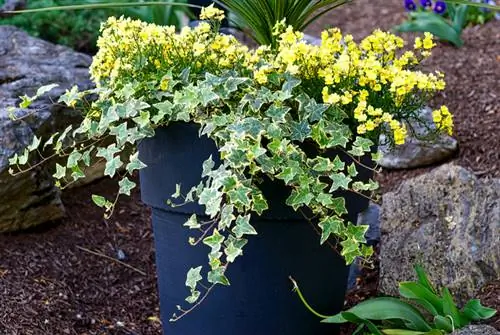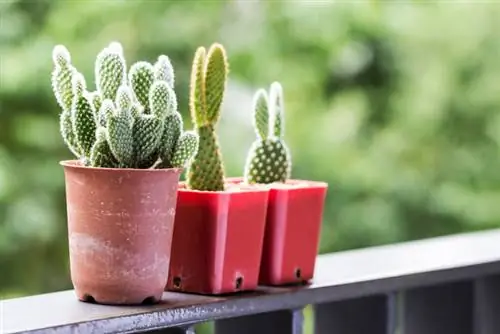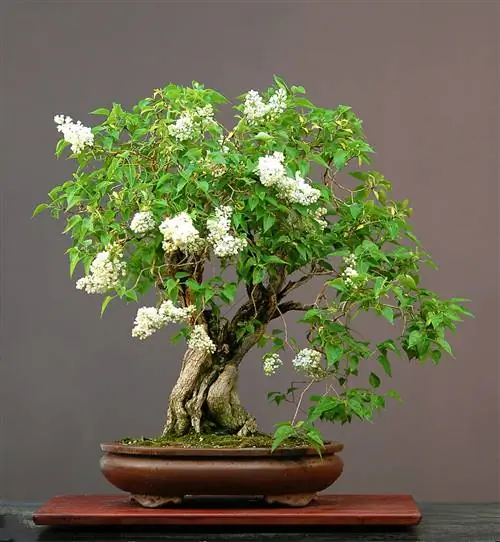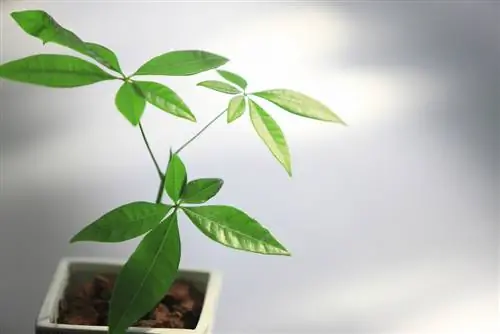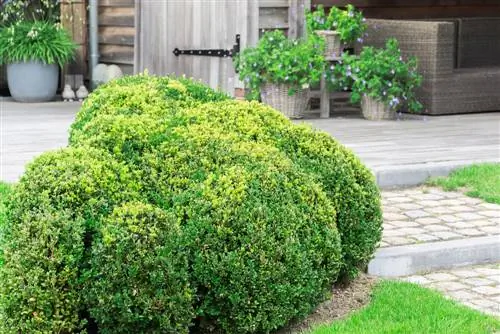- Author admin [email protected].
- Public 2023-12-16 16:46.
- Last modified 2025-01-23 11:20.
The bellflower - the botanist calls it Campanula - is a popular and very lushly flowering ornamental plant that thrives almost everywhere: in the garden under trees, in the rock garden, on dry stone walls as well as on the balcony or on the windowsill in the living room. However, their intended use depends heavily on the type of bellflower you want, as they sometimes differ considerably from one another in terms of their needs and requirements.
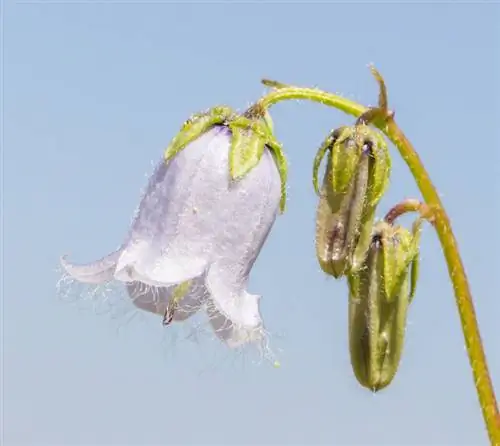
Are all bluebells hardy?
Are bluebells hardy? The winter hardiness of bellflowers (Campanula) varies depending on the species. Some species such as the rocket-leaved, bearded, meadow and rapunzel bellflowers are hardy and frost-resistant. Others, such as the Carpathian, dwarf, star, broad-leaved and St. Mary's bellflowers, require protection or are only partially hardy.
Not all bluebells are hardy
This is especially true with regard to winter hardiness, because the individual species of bellflowers are native almost everywhere from the Arctic to the Mediterranean climate zones. Accordingly, they naturally prefer a location and hibernation that best suits their natural surroundings. So if you live in a rather cold area of Germany and want to plant bluebells in your garden, then it's better to choose a species that is less sensitive to frost. These often originally come from the high mountains, especially. a. the Alps.
Bluebell species and their winter hardiness
In the table below we have put together some of the most popular types of bellflowers and their respective winter hardiness.
| Art | Latin name | Bloom | Growth height | Claims | Winter hardiness |
|---|---|---|---|---|---|
| Rocket-leaved bellflower | C. alliariifolia | white | 40 to 70 cm | very undemanding | in zones 3 to 7 |
| Bearded Bellflower | C. barbata | white or purple | 10 to 40 cm | prefers light forests, meadows | yes (high mountain plant) |
| Carparte bellflower | C. carpatica | light purple | 30 to 50 cm | grows in mountain forests | moderate (needs protection) |
| Dwarf Bellflower | C. cochleariifolia | white, violet or blue | 5 to 15 cm | occurs in the Alps | fair to good |
| Star Bellflower | C. isophylla | white | 10 to 20 cm | especially as a balcony plant | moderate |
| Broad-leaved bellflower | C. latifolia | light blue-violet | 60 to 120 cm | needs fresh, loamy soil | moderate |
| Marie's bellflower | C. medium | blue, white or pink | 60 to 80 cm | loose, nutrient-rich soil | moderate |
| Meadow bluebell | C. patula | light purple | 20 to 70 cm | thrives almost everywhere | good to very good |
| Caucasus Bellflower | C. raddeana | white | 10 to 30 cm | especially in rock gardens | fair to good |
| Rapunzel bellflower | C. rapunculus | light purple | 30 to 100 cm | Roots are edible | good to very good |
Don't just pay attention to the frost hardiness
If you want to overwinter bluebells, you shouldn't just consider the plants' sensitivity to frost. Most species of Campanula are perennials that, even if their shoots freeze back in winter, sprout again in spring from the overwintering rhizomes. Other species, on the other hand, are only one- to two-year-old bellflowers that have to be sown again and again. These include the St. Mary's bellflower, which is particularly popular as a cut flower, so it basically only has to survive a single winter.
Tips & Tricks
If you want to be on the safe side, cover your bluebells with frost protection in winter, e.g. B. spruce or pine branches. Bluebells in pots, on the other hand, overwinter best under cold house conditions, i.e. H. Frost-free, but cool and as dark as possible.

